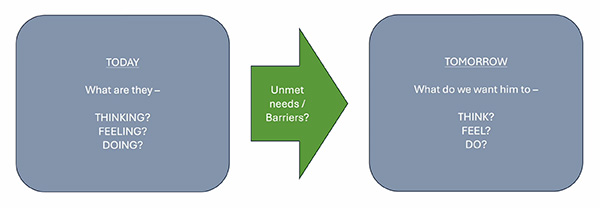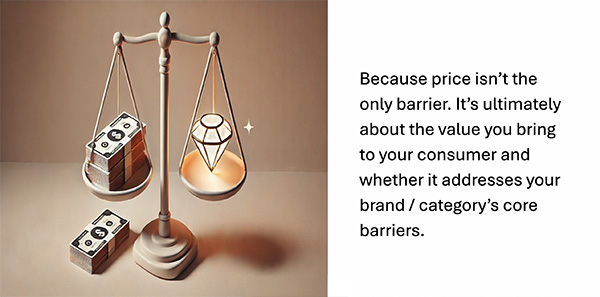STEEL HORIZONS | TAMPA: Creating customer delight in construction with David Bernardino
⏱️ 8 min read
Ever wonder how industry leaders are tackling construction's toughest challenges and building smarter for the future? Then you've come to the right place.
Welcome to the STEEL HORIZONS speaker spotlight, where we unpack the most insightful moments from the recent STEEL HORIZONS | TAMPA event, so you can stay up to speed with the latest perspectives and technologies shaping the future of construction.
In this spotlight, David Bernardino, Founder and Managing Director of Bernardino Enterprises, explains why understanding and delighting your customer is no longer a nice-to-have but a business essential.
A seasoned marketing strategist with over 25 years of experience, David has helped grow brands for Fortune Global 100 companies like Procter & Gamble, Merck, Samsung and Deloitte, and today sits on the board of directors of the National Association of Home Builders and the She Built Foundation.
Widely respected in the construction industry for his insight and deep sector knowledge, he demonstrates how effective marketing bridges the gap between product innovation and customer uptake, and helps create lasting value.
Changing minds, changing markets
Marketing has often been undervalued in construction. Typically, it is seen as little more than producing polished brochures and branded swag with limited strategic focus.
For David, this attitude highlights a frustrating misunderstanding about the true nature and value of marketing. What real marketing does is drive change, he says. It helps customers recognise new solutions and adopt them, seeing value where they had not before:
“Marketing is solely focused on changing consumer behaviour because if they were adopting the behaviour you wanted, you wouldn't need us.”

Whether you are selling precise framing systems, modular homes, or advanced digital tools, innovation only succeeds if customers are willing to try something new. That is where marketing becomes critical. It helps shift how people think and act, garnering loyalty and repeat custom.
Understanding the customer’s journey
So how do you get people to change the way they behave, and adopt your product or service? You start with the customer, according to David, and a very simple framework that has been used by Procter & Gamble for decades.
- What are they doing today?
- What do you want them to do tomorrow?
- What’s stopping them?
He encourages mapping your customer’s journey on a single page using this framework.
“The most important piece of the equation is what's in the middle - what's the barrier to change? What are the unmet needs that your customer, your target audience, or whomever is seeking but is not telling you?”
This step is often overlooked. It is easy to focus on your product and its features, but real breakthroughs happen when you take the time to understand your customer’s pain points and what is holding them back.
“It takes a lot of time, it takes a lot of effort, it takes a lot of wherewithal to get the voice of the customer.”
“If you’ve done this exercise you can transform marketing from a cost driver into a business driver.”

Overcoming the industry’s risk aversion
One of the biggest barriers David identifies is risk aversion. It is hardwired into construction culture and keeps many builders and developers from embracing new ideas.
“We are a risk averse industry, and that leads to a bias against change. The number one thing you hear is, ‘I don’t want to be the guinea pig. Come back to me when someone else has proven it out.’”
This fear of failure stifles progress. Even when a solution could save time, reduce waste, or improve quality, many customers hesitate because they are worried about taking a gamble.
Smart marketing can break through that fear by recognising it for what it is, and addressing that by building trust and empathy, and making the benefits clear and credible.
From satisfaction to delight
You do not build loyalty, trust, and word-of-mouth by simply meeting expectations. You have to exceed those expectations. Success comes from delighting your customer, creating experiences that keep them coming back and turning them into advocates.
“If you don’t delight your customers, they’re not going to become repeat business,” he warns.
This means offering real value, delivering on your promises, and then going one step further. It is also about keeping communication open and clear, and ensuring your product or service solves real problems in a way that feels smooth, effortless, and satisfying.
Crafting your value proposition
Once you know more about your customer and their barriers to adoption, how do you move the needle? You need a value proposition, and for that, David offers a no-nonsense formula for building a clear, persuasive statement:
“Because we give X, you the consumer get Y. And here are three reasons to believe.”
Why price is not the real driver
After mapping out customer barriers and setting your proposition, many in construction still fall back on one familiar argument: price is everything. But David firmly challenges this belief, explaining that it is often a lazy fallback when true value is not clearly communicated.
“Price is the number one purchase driver. That's a crock of nonsense. Because if you're actually delivering something that addresses those consumer needs in a way that's differentiated to you, you can actually drive premium pricing.”
This idea ties directly back to understanding customer pain points and delivering on promises. When your offer genuinely solves real problems, removes friction, and makes life easier for your customer, price moves down the priority list.
In other words, the more effectively you build trust and create delight, the less likely your product or service will be judged on price alone. It is a reminder that marketing is not just about visibility – it is about shaping the perceived value in ways that make premium pricing not just possible, but expected.

Lessons from other industries
Marketing hidden or technical products - like many of those used in construction - can seem like a steep climb, but David shows it is absolutely achievable, sharing examples from other industries where companies transformed unseen or complex products into trusted, go-to names.
-
Tylenol: The pain relief is chemically identical to the store brand, yet Tylenol built trust through consistent messaging and strong branding, earning a premium place on shelves.

-
Intel: A tiny processor hidden inside your computer, made famous by the simple message “Intel inside.” They created confidence around a product most consumers never see but now recognise as a mark of quality.

-
Owens Corning: Their insulation product - tucked behind walls - became iconic thanks to the Pink Panther branding, which gave it personality and long-term brand power.
His message is clear: if you can make a processor chip famous, construction businesses can do the same for what is inside the walls, by making their value visible, meaningful, and memorable.
Rising to the marketing challenge of a lifetime
The construction industry faces mounting challenges - labour shortages, rising costs, tighter regulations, and growing demand for faster, better outcomes. These pressures do not just shape how we build; they reshape how we must connect with customers.
"This is the marketing challenge of a lifetime."
Success now depends on those willing to make marketing a core part of their strategy: understanding customer needs deeply, breaking down barriers to change, and communicating clear, compelling value.
“Where do you stand? And are you ready to take advantage of the opportunity in front of you?”
Stay tuned for more insights from STEEL HORIZONS | TAMPA, and if you’re ready to transform the way you build, let’s talk.